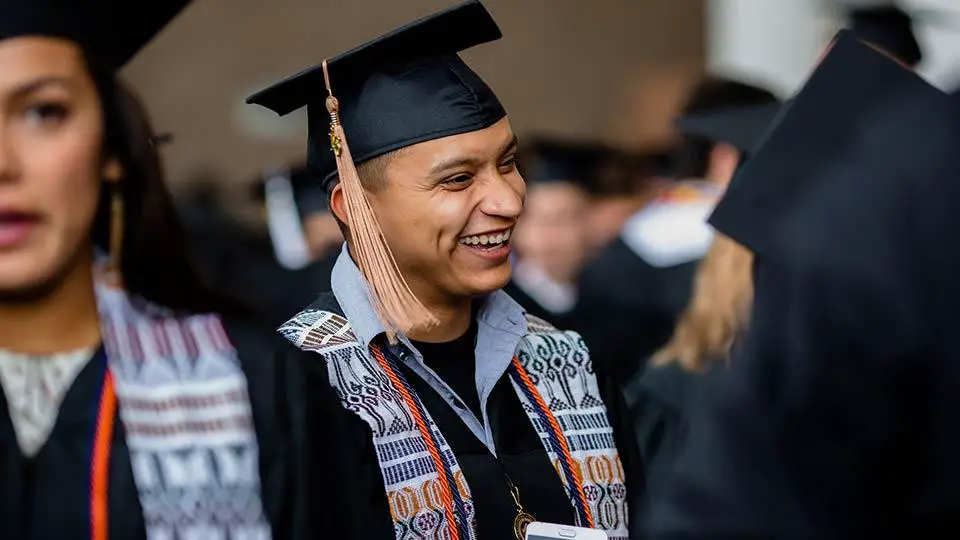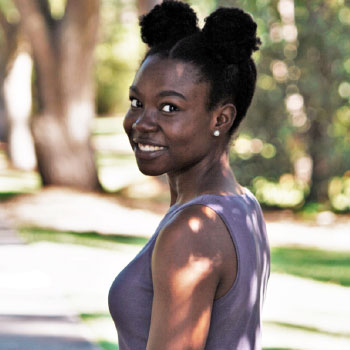Everyone looks forward to graduation day. College students know this day signifies breaking the chains of nearly thirteen years of schooling and entering the great unknown of adulthood. As a student at Fresno Pacific University, senior communications major Karen Vargas looks forward to her graduation day next May and even more so to proudly representing her Mexican culture with an ethnic sash. However, Vargas would not simply be able to wear the sash across the stage on her graduation day. It would be something she, on behalf of other students of minorities background, had to fight for.
After the announcement that ethnic sashes would no longer be worn on graduation day, Vargas began a petition at Fresno Pacific University to reinstate the sashes. She found herself relying on her knowledge and education as a communications major when advocating for change at the university. No stranger to being a leader on campus, the former DREAMers Club President’s petition won back the opportunities for students to wear sashes representing their ethnic origin once again during graduation.
Joiya Reid: What was your initial reaction where you heard about the sashes being removed from graduation?
Karen Vargas: Well when I first heard about the sashes being taken away, I was very saddened to know that they had just been taken away without us knowing about it. I got informed about the petition in a committee that I’m in, and they just released the news in a way that was very defeated. There was a stirrup in my heart in regards to the sashes because it’s something that I always looked forward to when I graduated.
JR: What committee were you apart of that told you about the petition?
KV: I first heard about it in the Multicultural Committee here at Fresno Pacific, and it wasn’t until a few weeks later when one of the professors here at FPU wrote something about ethnic sashes being taken away and posted it on what we call the Wittenberg Door that I was educated a bit more as far as the petition process of getting rid of the sashes. It seemed unfair for students.
JR: Did you start the petition with the help of the Multicultural Committee?
KV: No, that’s something that I began on my own after reading the article that the professor wrote and posted here at Fresno Pacific. I decided I wanted to do something about it, and I just got the idea, “Hey I should start a petition.” I thought I might as well share it on social media that way I could get a couple of signatures. My goal was a hundred, but by the end of it, there were a little bit over thirteen thousand signatures.

JR: How did you feel about the student response to your petition?
KV: I absolutely loved it. I loved seeing how it takes a village to make something happen; it was really cool. This is an issue that was close to my heart, and I wasn’t sure if it was something that students also cared about, but it was neat to see how, when you advocate for something people care about, you won’t be alone.
JR: What happened after you got the signatures for the petition?
KV: After getting the signatures, I met with the President of the University and there were a lot of people who work at the institution with students. After meeting with the President, there was a period of waiting to see what would happen next. I think after that, I ended up doing a Q&A event here on campus in which they allowed me to bring up the issue and help students become more aware of what was going on. Then it was crazy because, in this period, there was a mixture of newspapers articles and others trying to get a hold of the story, so I think after getting so much attention and people being like, “Hey, this is what’s going on,” the university later came on and made a public announcement to reinstate the ethnic sashes.
JR: What do the sashes mean to you?
KV: To me, it represents my culture and my struggle. As we know, higher education was neither originally meant to be for women nor was it meant to be for people of color, so the fact that we have such a diverse population of college graduates today puts so much pride in me, especially to know that I’m one of those graduates. Every year, when I would get to see somebody wearing an ethnic sash, I just thought it was so great how this university was acknowledging the fact that people from minority groups have come so far in terms of academics. So to me, it represents my family and my roots and my struggle being a woman, Latina, Mexican and just all those other things we have had to overcome to get to where we are.
JR: As a minority student, do you feel you are properly and equally represented at Fresno Pacific?
KV: You know, that’s something that I haven’t really considered up until a few weeks ago when I began this process of trying to get the sashes back. It wasn’t until then that I realized I have not had any Latino professors in any class. It’s crazy when you get told that fifty something percent of the student population is Hispanic or Latino, but you don’t see that being represented in the body of professors that are hired or even by the people in the President’s cabinet. I see areas of improvement in terms of representation.
JR: It is said that the sash tradition started twenty years ago and has now spread to representing even more minority groups, what is your take on this?
KV: I love that. There’s been—I don’t know if you’re aware—but now that the ethnic sashes are brought back, they will actually also be offered to Caucasian students; so just about every single ethnicity or race will now be represented with a sash which now, in a way, changes the meaning of an ethnic sash. A part of me acknowledges that being a human includes wanting recognition and taking pride in your roots, so I can see how it, in a way, addresses some of those student concerns of not everybody being represented with a sash.
JR: So how do you feel about the fact that these sashes, which originally meant to represent non-American, non-White cultures, are now being offered to White American students?
KV: I’m conflicted because, just a few months ago, there was a petition started to not be a sanctuary school for undocumented students; and, for me, being a part of this group, it effected me personally, and I saw how it effected so many other students around campus. So, already undocumented students are yet another minority on campus and, months later, the issue with the sashes happens.
In a way, it feels like something else is being taken away from those students who are already struggling so much because, a lot of the students who are undocumented, are the ones who also get represented through those sashes. My heart kind of breaks for the students who are already under political attack because of undocumented issues, and here they have this other thing that now effects the way in which they will present themselves on a day that’s supposed to bring them so much pride. Some students express their views on how it feels like, in order to keep the sashes, maybe try to appease the White American student body population. That’s unfortunately something that, when you undergo certain struggles in this country, kind of weighs a little bit over your heart.

JR: So what did the university do in order to include those who felt they weren’t represented?
KV: They said they would try to make things more inclusive, and the first part of that was taking away the sashes and replacing them with flags. So, there was going to be a parade of flags, which I believe will still be a part of the graduation ceremony, and there’s also something that they’re trying to do called a Baccalaureate which would be a celebration of cultures and an event of worship.
JR: Do you believe that flags are a viable alternative to having sashes?
KV: No, and there was a reason we kept pushing for the sashes to be brought back. As we already know, there are people who are migrating from their country for political reasons, there are also people here who are refugees and then there are some that are under war, so I just don’t think that a flag could make somebody feel proud of their roots if, at the moment, they’re a refugee.
JR: What are some things that you’ve learned or come to realize in light of this situation?
KV: I learned a lot. I think that most of the things I learned were things that had to do with my character and the way in which I want to pursue leadership. There were so many instances in which I caught myself wanting to fully represent the voices of those that spoke to me about this topic, and everybody always has a really strong opinion or everybody wants to be heard so, as a person who is on a public platform, I feel like you have a certain responsibility to be the voice for those you are standing up for.
It just seems a little bit hard to do so when everybody feels a different way on something that is so tied to their roots and culture. I learned a lot about how this country really does have such a huge amount of diversity within its people, even if they are in the same area. Everybody always has something interesting and a different outlook on an issue, and that’s when I started thinking about how politicians have such a hard job. I’m just thinking a lot about justice and what it means to, in today’s society, be a voice for those who you believe can be oppressed or who you believe should have a greater say in defining what happens around them and ultimately affects them.

















